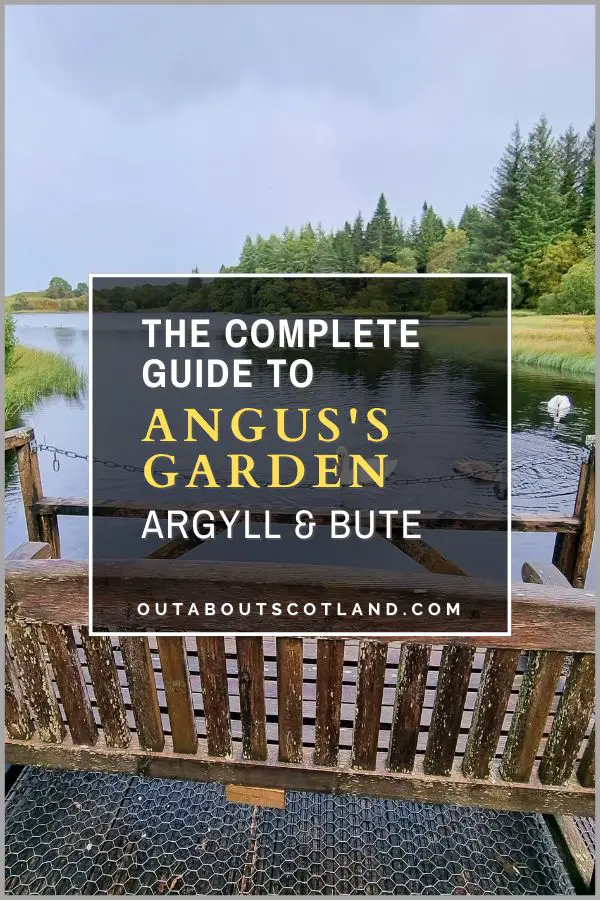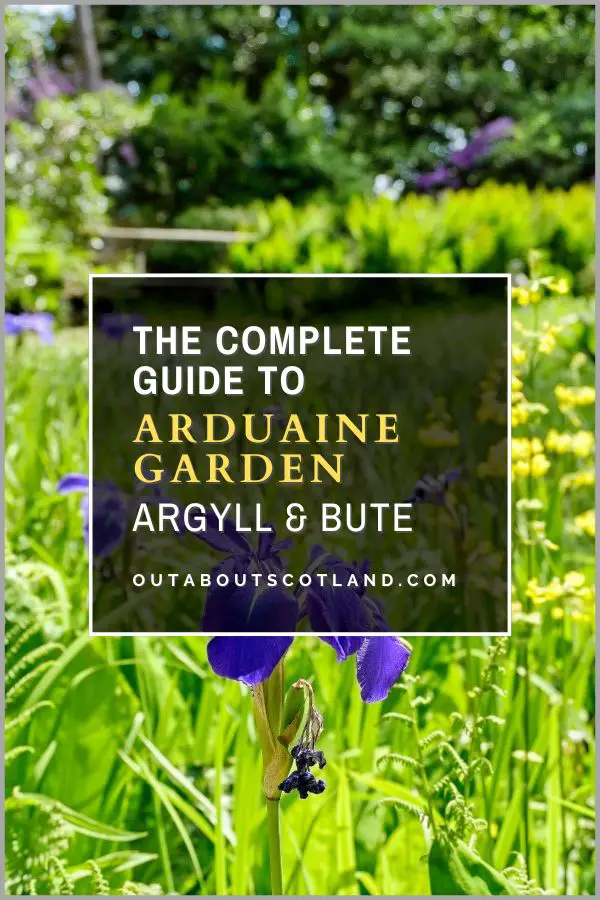Angus’s Garden, located in Argyll & Bute, is a managed landscape dedicated to Angus Macdonald, who died in the 1950’s. The garden is the work of his mother, Betty, who spent 40 years creating a beautiful nine-acre woodland garden as a memorial, complete with walking trails that circle an extensive collection of rhododendrons and azaleas as well as a small loch.
Discover the incredible collection of plants and animals that live in Angus’s Garden with this complete guide which provides information about visiting the site as well as ideas for other places to visit in the surrounding area.

| Address: | Taynuilt, Argyll & Bute, PA35 1HY |
| Opening Hours: | Open year-round, 9am to dusk. |
| Admission Price: | Adult (16+): £5 Children under 16: Free |
| Parking: | On-site car park. |
| Contact: | email: info@barguillean.co.uk Tel: 01866 822 333 |
| Facilities: | No on-site toilets or cafe. Nearest shops, cafe, & toilets are in Taynuilt (postcode PA35 1JE). |
Overview
If you’re looking for an often-missed part of Scotland to head to for a few days, consider adding the area around Oban and Taynuilt to your sightseeing list. This region of northern Argyll and Bute is absolutely overflowing with drop-dead gorgeous places to visit, from the majestic Ben Cruachan mountain and the serene Ardmucknish Bay to the north to the lovely Glen Nant and Loch Awe to the south.
Sitting right in the middle of those attractions is a wee hidden gem that I highly recommend you visit, Angus’s Garden.
Betty Macdonald created the garden in the late 1950s as a tribute to her son Angus, who died in Cyprus in 1956 at the hands of a terrorist. The Macdonald family are the owners of the surrounding Barguillean Estate, which covers more than 4,000 acres in total, comprising two working livestock farms in addition to forestry, hills, and the land that is now Angus’s Garden.
Betty Macdonald spent the best part of 40 years creating this nine-acre site which features a loch, an extensive woodland, a stunning collection of shrubs and flowering plants, and a network of winding paths that allow visitors to explore the site on three designated nature trails.
This unspoilt setting attracts a wide range of wildlife both in the woodland and on the 11-acre loch, but it really comes alive between April and June when the majority of the managed rhododendrons and azaleas bloom in a stunning display of colours.
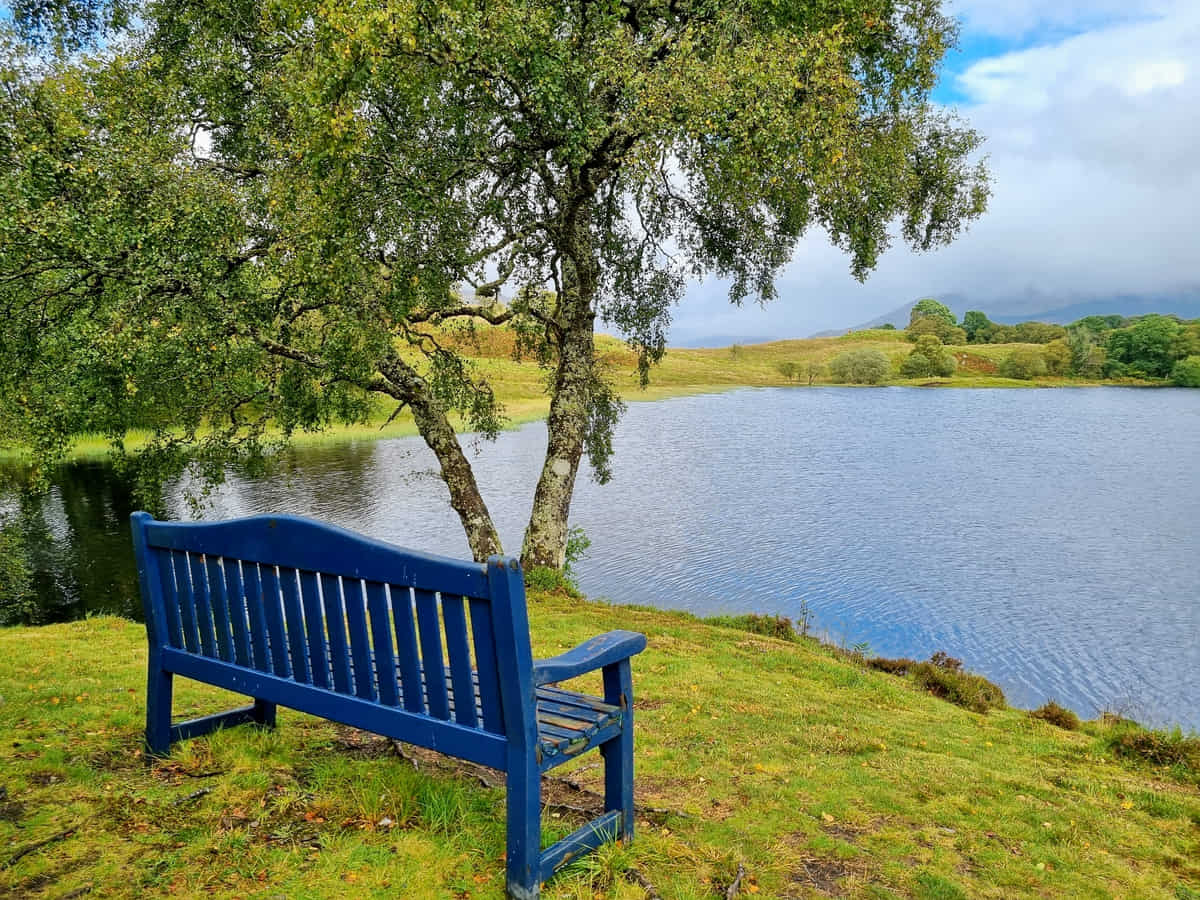
To get to Angus’s Garden, follow the A85 heading west out of Taynuilt for 0.7 miles, then take the tuning heading south to Balindore. From the turning, it’s around 2 miles on a single-track road to the garden car park which is signed from the roadside close to a number of unmissable glass greenhouses.
Once there, you’ll find the garden entrance with an entry fee box, after which you’re free to follow any of the trails that run through the site. I personally recommend following the ‘Long Route’ which takes in all of the garden’s highlights, including its lovely collection of rhododendrons, as well as a few nice surprises, including a glade, a lawn (perfect for a picnic), several benches, and a platform overlooking Loch Angus.
This platform has another bench seat with superb views of the Cruachan mountain range and it’s a great spot to throw some breadcrumbs to the swans and ducks which will inevitably come over to say hello as soon as you stop there.
The garden’s best viewpoint, in my opinion, is located on the west side of the loch on a small hill which is home to ‘Betty’s Bell’, a monument to the lady who created the garden. From this point, you can continue around the loch back to the car park, or you can head out of the garden and follow a minor track that heads into the vast Fearnoch Forest, which has a spider’s web of paths that will keep even the most enthusiastic walker busy for a full day.
Keeping within the garden boundary, expect to take around one hour to complete the Long Route at a leisurely pace, or just under 30 minutes to complete the aptly-named ‘Short Route’ which is centred around the area near the car park. A third trail, the Medium Route, adds another 15 minutes to the walk, or you can just set off on any path at random and take as much, or as little, time as you like.
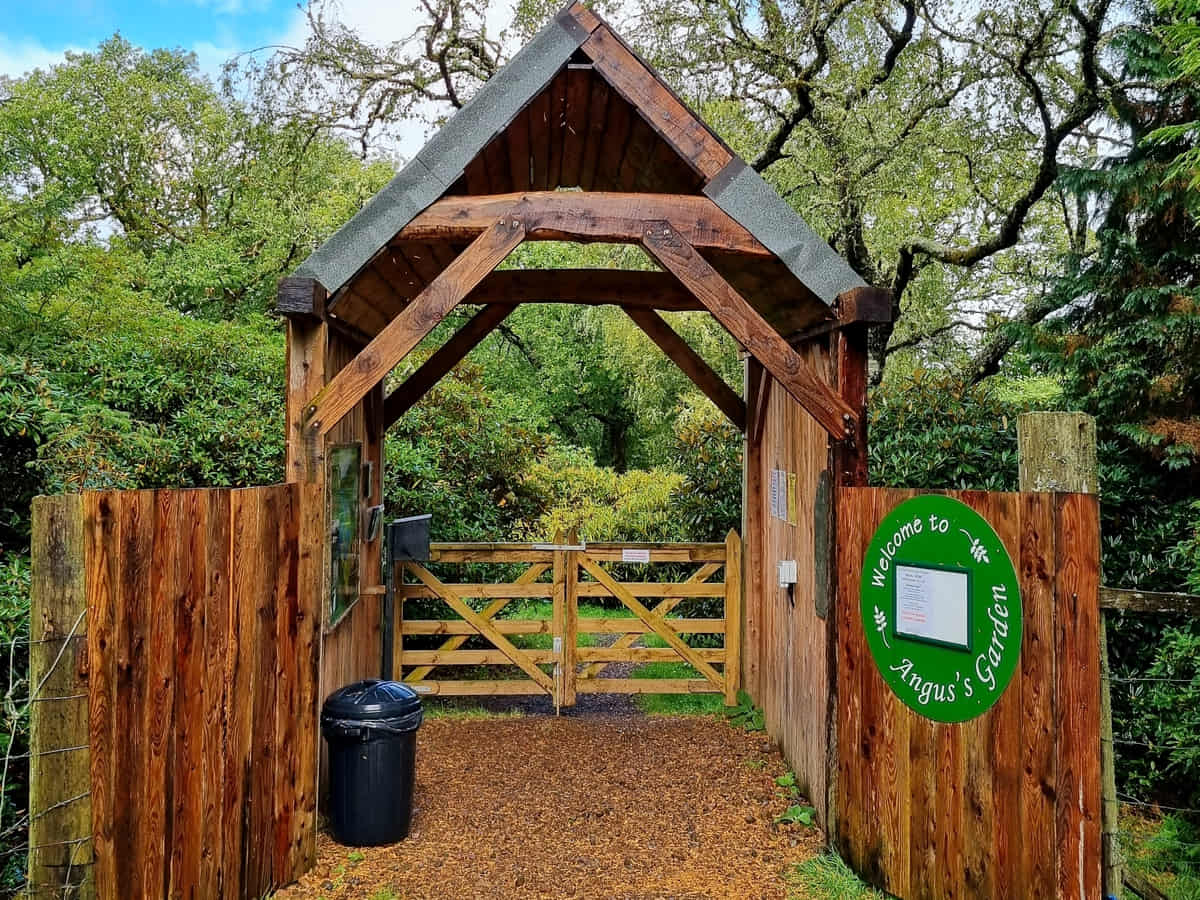
Book Tours in Scotland
The Highlights
1: Angus’s Garden is a good destination to bear in mind for anyone in the area who’s looking for an enjoyable walk in a scenic setting, without having to venture into the surrounding hills and mountains. The three waymarked trails are suitable for most abilities though visitors should be aware that they’re not suitable for wheelchair users.
2: If you’re travelling with kids they’ll love a wee break in the garden, especially if you take them to Loch Angus which is home to families of ducks and swans. Remember to take some bread and let the kids feed the wildlife while you relax on a bench and soak up the scenery.
3: The entire area around Angus’s Garden is perfect for anyone who loves the great outdoors. To the north, there’s Loch Etive and to the east, there’s Loch Awe, so if you have kayaks or paddleboards you won’t have to venture far to get onto the water.
If walking is more your thing, both Fearnoch Forest and the Glen Nant Nature Reserve offer lovely trails, while hill walkers only have to travel east a few miles to begin the ascent up Ben Cruachan mountain.
Visiting Tips
1: Take note that some sections of the paths around Angus’s Garden are very slippery after a rainfall, so wearing walking boots with decent grips (link to boot reviews) is essential.
2: Wheelchair users will find a more suitable – though short – path in the Glen Nant Nature Reserve which is 4 miles east of Angus’s Garden. The reserve has a wheelchair-friendly riverbank trail that leads to a picnic area overlooking the River Nant.
3: The garden has paid entry but it’s by donation in a cash box, so if you visit make sure you take coins or notes with you. As a side note, the entry fee is donated to a charity for the Armed Forces.
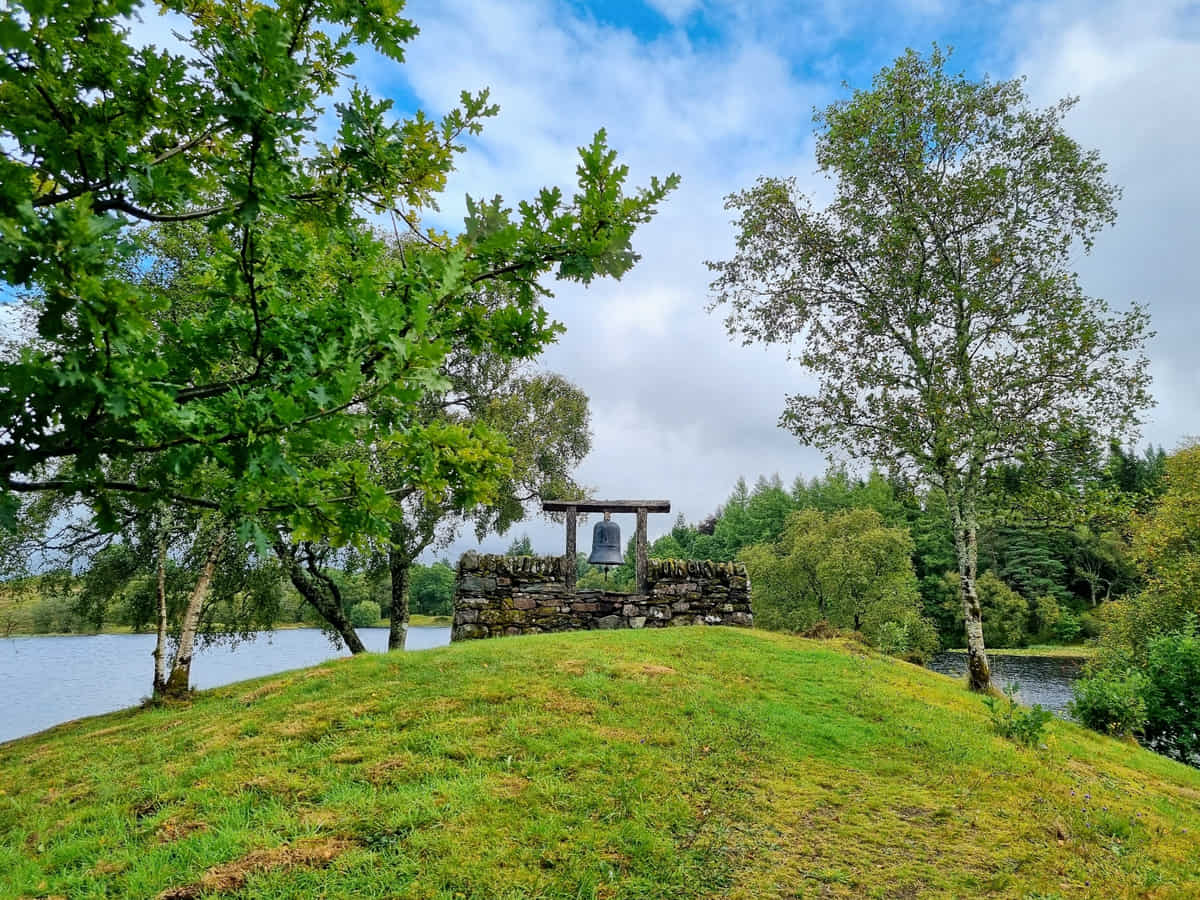
Protect Your Family From Scotland's Biting Midges
- Powerful, reliable protection for up to 8 hours
- Water- and sweat resistant
- Repels midges, mosquitoes, horse flies, sand flies, fleas and ticks
- Safe for use on adults, children over 30 months and pregnant women
- Non-sticky, moisturising with a pleasant fragrance
- Packaging may vary
Things to Do
Exploring the Gardens: Angus’s Garden is a popular tourist destination thanks to its stunning collection of rhododendrons, azaleas, and a wide variety of flowering shrubs and bulbs. Visitors can stroll along three different picturesque paths lined with trees and flowers and enjoy dazzling displays of colours and fragrances.
Wildlife Watching: The garden is home to an array of wildlife species around Loch Angus and the woodland, and visitors will have the chance to see ducks and swans as well as a multitude of different insects. Children, especially, will love a visit to Angus’s Garden.
Photography: Given its natural beauty and abundant wildlife, the garden is a great location for photographers. From the vibrant flora to the stunning mountain views, it’s a fantastic place for shutterbugs to hone their camera skills.
Scenic Walks: The garden is surrounded by woodland and lochside walking trails that provide stunning views across Loch Etive and towards Ben Cruachan. The Walk Highlands website has a number of good walking trails that are close to Angus’s Garden.
Picnicking: The garden provides several scenic spots perfect for a relaxing picnic. Just remember to respect the environment and dispose of your rubbish responsibly.
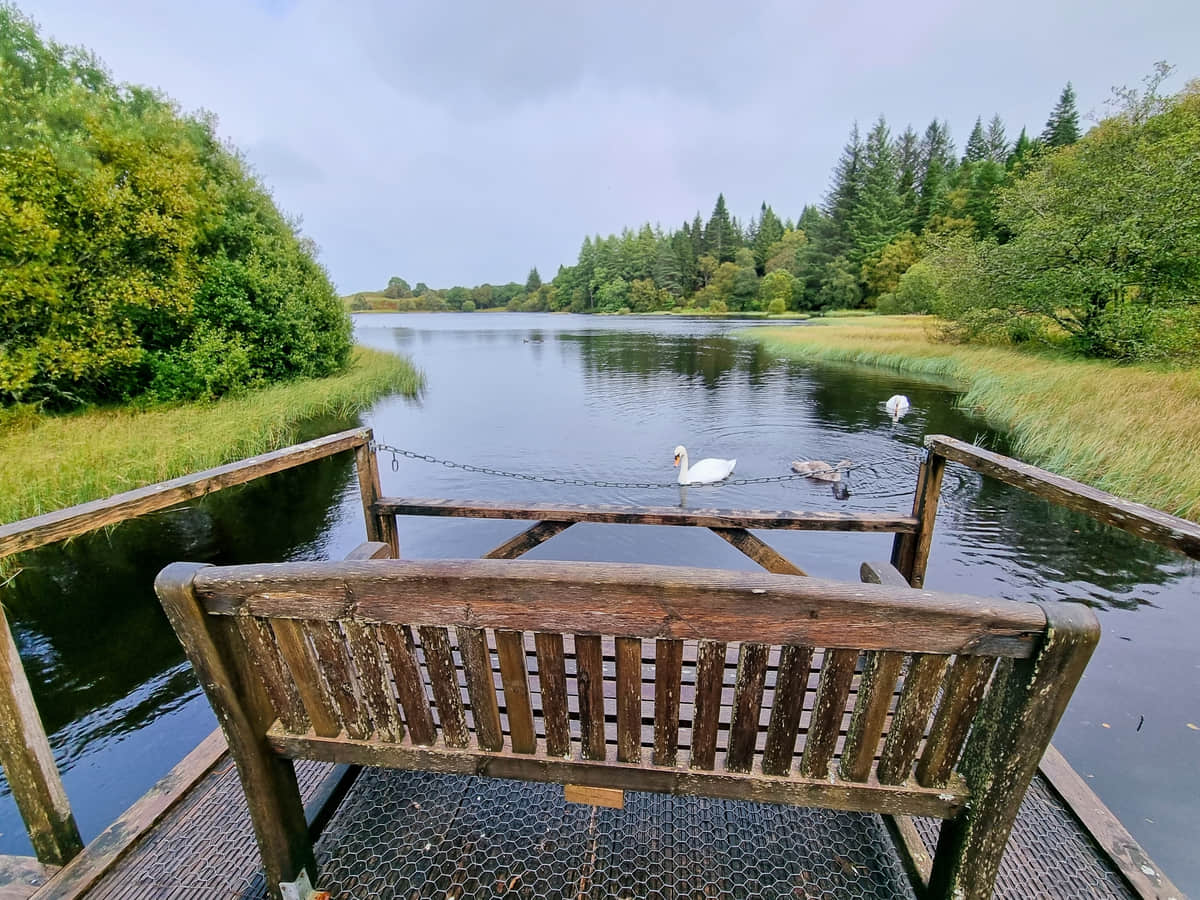
Things to Do Nearby
Glen Nant Nature Reserve. Address: Taynuilt, PA35 1JG. Distance: 4.2 miles.
An expansive forest with a variety of walking trails and scenic viewpoints that overlook Ben Cruachan Mountain. There are two main trails:one that passes through woodland on a rough path, and another that follows the River Nant on a short gravel path that’s suitable for wheelchair users.
Along the woodland trail, there are a number of interpretive panels providing information on Glen Nant’s history and ecology as well as a picnic bench that provides a panoramic view of the glen and the mountains beyond.
Bonawe Iron Furnace. Address: Taynuilt, Argyll, PA35 1JQ. Distance: 3.6 miles.
The Bonawe Historic Iron Furnace is a preserved 18th-century ironwork that stands as a testament to the nation’s industrial heritage. Located near Loch Etive, it showcases how pig iron was made using charcoal from the Glen Nant forest and offers an intriguing insight into the evolution of iron manufacturing in Scotland.
Cruachan Dam. Address: Dalmally, PA33 1AN. Distance: 8.5 miles.
The Cruachan Dam Visitor Centre offers an immersive learning experience about hydroelectric power. The centre provides guided tours, interactive exhibitions, and a tour deep inside the ‘hollow mountain’ to view its impressive underground power station, making it a fascinating destination for both engineering enthusiasts and curious tourists alike.
Dunstaffnage Castle. Address: Dunbeg, Oban, PA37 1PZ. Distance: 12.5 miles.
This impressive fortress dates back to the 13th century, making it one of Scotland’s oldest stone castles. Guarding a strategic location, it was built by the MacDougall clan (the original ‘Lords of the Isles’) but was passed to Clan Campbell in the 1460s.
The castle is a three-story structure of rough masonry, with a single round tower at the southeast and a main building that contains a series of cellars and store rooms. Historic Environment Scotland is in charge of managing the castle, which is accessible year-round.
Fearnoch Forest. Address: Taynuilt, PA35 1JB. Distance: 5.3 miles.
Fearnoch Forest is a charming woodland area located near the village of Taynuilt. It’s renowned for being a haven for hikers and nature lovers, offering several walking and cycling trails that wind through dense thickets of conifers and broadleaf trees.
One of the major highlights of Fearnoch Forest is its proximity to both Loch Etive and Loch Awe. This presents plentiful opportunities for fishing and boating after enjoying the woodlands.
Book Tours in Scotland
Frequently Asked Questions
How big is Angus’s Garden?
Angus’s Garden near Taynuilt is a nine-acre (0.014 square miles) woodland garden set around an eleven-acre (0.017 square miles) loch.
How much time do I need to visit Angus’s Garden?
Most visitors will need around one and a half hours to visit Angus’s Garden. There are three waymarked trails around the garden. The Short Route takes 30 minutes, the Medium Route takes 45 minutes, and the Long Route takes one hour to complete.
What is the history of Taynuilt?
Early History: The area around Taynuilt has been settled since ancient times, with archaeological evidence including standing stones and burial cairns. The name ‘Taynuilt’ comes from the Gaelic ‘Tigh-an-Uillt’ meaning ‘house of the stream’.
Mediaevall Period: In the Mediaevall period, Taynuilt was a significant settlement on the main drovers’ road from Oban to Tyndrum. The village grew around the local industries of farming and fishing.
Industrial Revolution: Bonawe Iron Furnace, established in 1753, transformed Taynuilt into an industrial hub. It was the most significant charcoal-fueled ironworks in Scotland, producing cannon and shot for the British military. It operated until 1876 and is now managed by Historic Environment Scotland.
What is the nature reserve near Taynuilt?
The Glen Nant Nature Reserve near Taynuilt is a lush and picturesque woodland managed by NatureScot, the Scottish Government’s advisor on wildlife and natural features. It covers an area of approximately 616 hectares (1,522 acres) and is a remnant of the Atlantic oakwoods that once spread across Scotland’s west coast.
The woodland is home to a variety of wildlife including roe deer, pine martens, badgers, and a range of bird species such as buzzards, sparrowhawks, and wood warblers.
Are dogs allowed at Angus’s Garden?
Dogs are allowed in the garden as long as they are kept on a lead.
Can wheelchair users visit Angus’s Garden?
Although there are designated paths, Angus’s Garden is unsuitable for wheelchair users due to the rough terrain. Some of the slopes are quite steep and become very slippery after a rainfall, so able-bodied visitors should consider wearing walking boots for their visit.



